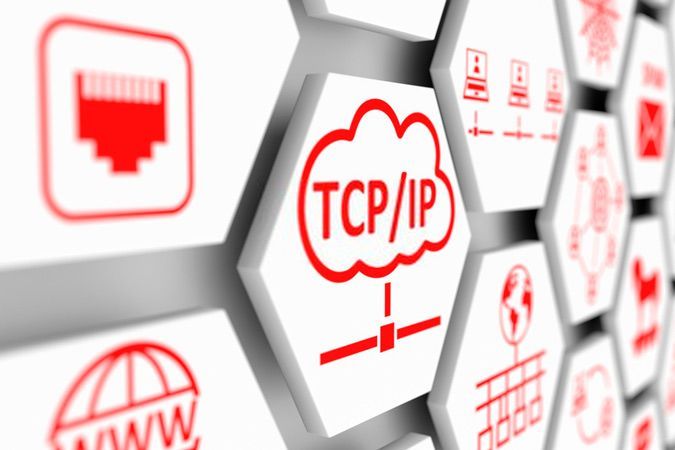Understanding Internet Protocols: TCP/IP and Beyond
The Internet is a vast network of interconnected devices that communicate using a suite of protocols. At the heart of this communication is the Transmission Control Protocol/Internet Protocol (TCP/IP). To fully appreciate the significance of TCP/IP and its related protocols, it’s essential to delve into their history, structure, functionality, and evolution.

Historical Context
The development of TCP/IP began in the 1970s by the United States Department of Defense through the ARPANET project. The goal was to create a robust and fault-tolerant communication system that could survive even if parts of the network were damaged. This led to the creation of the TCP/IP protocol suite, which became the foundation for the modern Internet.
The TCP/IP Model
The TCP/IP model is divided into four layers, each responsible for specific aspects of communication:
- Link Layer: This is the lowest layer, dealing with the physical and data link aspects of networking. It includes protocols like Ethernet and Wi-Fi, which handle the transmission of data over various types of physical media.
- Internet Layer: The Internet layer is responsible for routing packets across the network. The primary protocol here is the Internet Protocol (IP), which includes both IPv4 and IPv6. IP handles the addressing and routing of packets, ensuring they reach their intended destination.
- Transport Layer: This layer ensures reliable data transfer between devices. The main protocols are Transmission Control Protocol (TCP) and User Datagram Protocol (UDP). TCP provides reliable, ordered, and error-checked delivery of data, while UDP offers a faster but less reliable service.
- Application Layer: The topmost layer, it includes protocols and services used by applications to communicate over the network. Common protocols include Hypertext Transfer Protocol (HTTP), Simple Mail Transfer Protocol (SMTP), and File Transfer Protocol (FTP).
Transmission Control Protocol (TCP)
TCP is a connection-oriented protocol, meaning it establishes a connection between the sender and receiver before transmitting data. It ensures reliable communication through several mechanisms:
- Three-Way Handshake: To establish a connection, TCP uses a three-step process (SYN, SYN-ACK, ACK) to synchronize the sender and receiver.
- Error Detection and Correction: TCP uses checksums to detect errors and automatic repeat requests (ARQ) to correct them.
- Flow Control: TCP uses a sliding window mechanism to control the rate of data transmission, ensuring that the sender does not overwhelm the receiver.
- Congestion Control: Algorithms like Slow Start, Congestion Avoidance, Fast Retransmit, and Fast Recovery are used to prevent network congestion.
Internet Protocol (IP)
IP is responsible for addressing and routing packets across the network. Each device on the network has an IP address, which can be either IPv4 (32-bit) or IPv6 (128-bit). IPv6 was introduced to address the shortage of IPv4 addresses and provides several improvements, including simplified header formats and improved security.
User Datagram Protocol (UDP)
UDP is a connectionless protocol that offers a faster, but less reliable, method of communication compared to TCP. It is used in applications where speed is crucial and occasional data loss is acceptable, such as streaming audio and video, online gaming, and voice over IP (VoIP).
Beyond TCP/IP
While TCP/IP remains the backbone of Internet communication, the growing complexity and scale of the Internet have led to the development of additional protocols and technologies to enhance performance, security, and functionality.
Multiprotocol Label Switching (MPLS)
MPLS is a technique used to improve the speed and efficiency of network traffic flow. It directs data from one node to the next based on short path labels rather than long network addresses, reducing the time needed for routing decisions.
Software-Defined Networking (SDN)
SDN is an approach to networking that uses software-based controllers to manage network traffic. It allows for more flexible and efficient network management by decoupling the control plane from the data plane, enabling centralized control over the network.
Network Function Virtualization (NFV)
NFV decouples network functions like firewalls, load balancers, and intrusion detection systems from hardware, allowing them to run as virtualized applications on commodity hardware. This enhances network agility and reduces costs.
Internet of Things (IoT)
The proliferation of IoT devices has introduced new challenges and protocols. IoT devices often use lightweight protocols like MQTT (Message Queuing Telemetry Transport) and CoAP (Constrained Application Protocol) to communicate, given their limited processing power and the need for efficient, low-bandwidth communication.
QUIC Protocol
QUIC (Quick UDP Internet Connections) is a transport layer protocol developed by Google to improve performance for HTTP traffic. It combines the reliability of TCP with the speed of UDP, reducing latency and improving security with built-in encryption.
IPv6 Adoption
The transition from IPv4 to IPv6 is ongoing, driven by the exhaustion of IPv4 addresses. IPv6 not only provides a vastly larger address space but also includes improvements like better multicast routing, simplified packet headers, and improved security features with mandatory IPsec implementation.
Future Trends
As the Internet continues to evolve, several trends are shaping its future:
- 5G Networks: The rollout of 5G technology promises to significantly enhance mobile internet speeds and reduce latency, supporting new applications like augmented reality (AR), virtual reality (VR), and autonomous vehicles.
- Edge Computing: To reduce latency and improve performance, edge computing brings data processing closer to the source of data generation, rather than relying on centralized cloud servers.
- Enhanced Security Protocols: With the increasing prevalence of cyber threats, new security protocols and measures are being developed to protect data integrity, confidentiality, and availability.
